Fentanyl, an incredibly potent synthetic opioid, presents a hidden but lethal risk when it contaminates spaces. Originally developed to treat intense pain in medical settings, this opioid’s potency – up to 100 times that of morphine – requires careful, controlled handling.
However, fentanyl has made its way into the illicit drug market, where it’s often added to drugs like heroin, cocaine, and counterfeit pills, intensifying their effects and, in turn, the dangers. This covert presence of fentanyl has led to an alarming surge in accidental overdoses and fatalities among unsuspecting users.
But the threat of fentanyl contamination isn’t limited to drug users alone; it also extends to anyone who might come into contact with an affected area, including family members, landlords, first responders, and even cleanup crews.
Contaminated spaces range from drug labs and storage facilities to public areas, hotel rooms, and private residences – wherever traces of fentanyl can be left behind. The consequences of accidental exposure are severe, and even a minuscule amount can cause overdose or death. Given these critical health hazards, recognizing the risks of fentanyl exposure and understanding why cleanup requires specialized, professional intervention is crucial.
In cases where fentanyl contamination is suspected, attempting DIY cleanup is a risky – and potentially deadly – mistake. Only trained professionals with the right equipment and knowledge can ensure a space is safe again, effectively protecting individuals and communities from this invisible and often underestimated danger.

Fentanyl, a synthetic opioid used in medical settings, is 50 to 100 times more potent than morphine. While it is valuable for treating severe pain under controlled conditions, even a trace amount can lead to overdose and death.
Unfortunately, fentanyl has permeated the street drug market, leading to a tragic surge in accidental overdoses. This opioid is deadly not only for users but also for anyone who might come into contact with it unintentionally – from family members to first responders, cleanup teams, and even bystanders.
Here are critical points about fentanyl’s extreme dangers:
The combination of these factors makes fentanyl one of the most dangerous substances to encounter. Professional intervention is essential to ensure safety, as even slight exposure can result in severe health consequences, underscoring the need for thorough, expert cleanup in contaminated areas.

Attempting a DIY cleanup of fentanyl contamination is an extremely high-risk endeavor. Here’s why:
Bio-One’s certified technicians lead fentanyl cleanup with unmatched expertise and empathy, understanding the sensitive nature of such situations. Here’s why Bio-One is the premier choice for fentanyl decontamination:

Choosing the wrong company for fentanyl cleanup can lead to catastrophic consequences. Here are the risks associated with unqualified cleanup services:
Bio-One of Glendale is dedicated to providing safe, thorough fentanyl cleanup services that safeguard families, public spaces, and public health. With a specialized approach and a compassionate commitment to each case, Bio-One stands out as a trusted partner for effectively reclaiming and restoring contamination-free spaces. Here’s what sets Bio-One’s fentanyl cleanup services apart:
Bio-One’s commitment to professionalism, safety, and compassion makes it an invaluable partner for anyone facing the dangers of fentanyl contamination. Their expert services provide the peace of mind that spaces have been thoroughly decontaminated and safely cleaned.
Fentanyl is 50 to 100 times more potent than morphine, making even a trace amount potentially lethal. Its ability to cause overdose from mere skin contact or inhalation adds to its high-risk profile.
Fentanyl can contaminate spaces through illicit drug manufacturing, storage, or usage. These locations can include private residences, hotel rooms, vehicles, and public spaces.
Anyone who comes into contact with a contaminated area is at risk, not just drug users. This includes family members, property managers, first responders, and cleanup crews.
DIY efforts lack the specialized equipment and knowledge needed to remove fentanyl safely. Without these, individuals risk severe health consequences from exposure.
Bio-One employs specialized cleaning agents and strict protocols to neutralize fentanyl's potency, ensuring all residues are safely removed from the contaminated areas.
Bio-One navigates the complex legal and insurance processes involved in fentanyl cleanup, ensuring compliance with regulations and aiding clients in managing claims.
If you suspect contamination, avoid the area and contact a professional cleanup service like
Bio-One immediately to handle the situation safely.
Yes, fentanyl residues might not be visible, making professional assessment critical to identify and safely clean all contaminated surfaces.
Cleanup times can vary, but Bio-One typically completes most projects within one to two days, depending on the extent of contamination.
Bio-One offers certified expertise, rapid response times, advanced cleaning techniques, and a compassionate approach, making them highly effective and sensitive to the needs of those impacted by fentanyl contamination.
Holding cells see a constant flow of detainees, many of whom arrive injured, intoxicated, or carrying infectious diseases. Blood, vomit, urine, drug residue, and even pest infestations can quickly turn these areas into biohazard hotspots.
While routine cleaning may address surface-level messes, it often fails to eliminate the hidden dangers that put officers, staff, and detainees at risk. Law enforcement professionals already face enough hazards on the job—exposure to biohazards in holding cells shouldn’t be one of them.
Ensuring these spaces are adequately decontaminated goes beyond sanitation; it’s a matter of health, safety, and compliance. That’s where Bio-One comes in. Our specialized biohazard remediation services help agencies maintain clean, safe detention areas while reducing risks to personnel and the public.

Officers and staff interacting with holding cells face exposure to various dangerous contaminants. Some of the most common biohazards found in these areas include:

While effective for general sanitation, standard cleaning protocols are not designed to eliminate biohazards. Many pathogens, drug residues, and contaminants require specialized equipment and training to remove correctly. Here’s why professional cleanup is essential:

Bio-One specializes in biohazard remediation and works directly with law enforcement agencies to maintain clean, safe, and fully operational detention facilities. Our services include:
Law enforcement officers already face enough risks on the job—exposure to biohazards shouldn’t be one of them. By partnering with Bio-One for holding cell cleanup, agencies can ensure a safer environment for officers, staff, and detainees while maintaining compliance with health and safety standards.
For immediate assistance with biohazard cleanup in holding cells or other law enforcement areas, contact Bio-One of Glendale today at (623) 888-4276.
Holding cells frequently contain blood, vomit, urine, feces, saliva, drug residues (such as fentanyl or meth), and even pests like lice or bedbugs. These biohazards pose serious health risks if not properly decontaminated.
Standard cleaning methods may remove visible messes, but they often fail to eliminate pathogens, drug residues, and lingering contaminants that can cause infections, diseases, or secondary exposure to officers and detainees.
Bodily fluids can carry dangerous pathogens such as HIV, hepatitis B & C, tuberculosis, and MRSA. These contaminants can remain on surfaces without proper cleanup, increasing the risk of disease transmission.
Even trace amounts of fentanyl or methamphetamine can be hazardous. Officers and detainees can be exposed through skin contact or accidental inhalation. Professional decontamination ensures that all drug residues are safely removed.
Bio-One follows strict biohazard remediation protocols, using hospital-grade disinfectants, advanced decontamination techniques, and protective measures to eliminate biohazards, neutralize odors, and restore holding cells to a safe condition.
Bio-One provides 24/7 emergency response to law enforcement agencies, ensuring holding cells are decontaminated and ready for use as quickly as possible.
Yes. Bio-One adheres to OSHA, EPA, and local health department regulations, ensuring full compliance with safety and sanitation requirements for law enforcement facilities.
Proper decontamination prevents the spread of diseases, minimizes exposure risks for officers and detainees, and ensures compliance with safety regulations—reducing the likelihood of lawsuits related to unsanitary conditions.
Yes. Bio-One’s advanced cleaning techniques include odor neutralization, eliminating lingering smells caused by bodily fluids, vomit, or chemical contaminants like pepper spray.
Bio-One offers one-time emergency cleanups and scheduled biohazard cleaning services to help agencies maintain safe, sanitary holding cells. Law enforcement departments can contact Bio-One to discuss customized cleaning plans.
If you love someone who hoards, you’ve probably asked yourself, “Why can’t they just throw this stuff away?” It’s frustrating. It can feel like your loved one is choosing things over their own safety or happiness. But the truth is, hoarding isn’t just about being messy. It’s often related to a mental health disorder.
Behind the piles of stuff, there’s often a lot of pain. Your loved one might be struggling with anxiety, depression, trauma, or deep feelings of fear. The clutter you see is only part of the story. This Mental Health Awareness Month, let’s talk about what’s really going on—and how you can help.
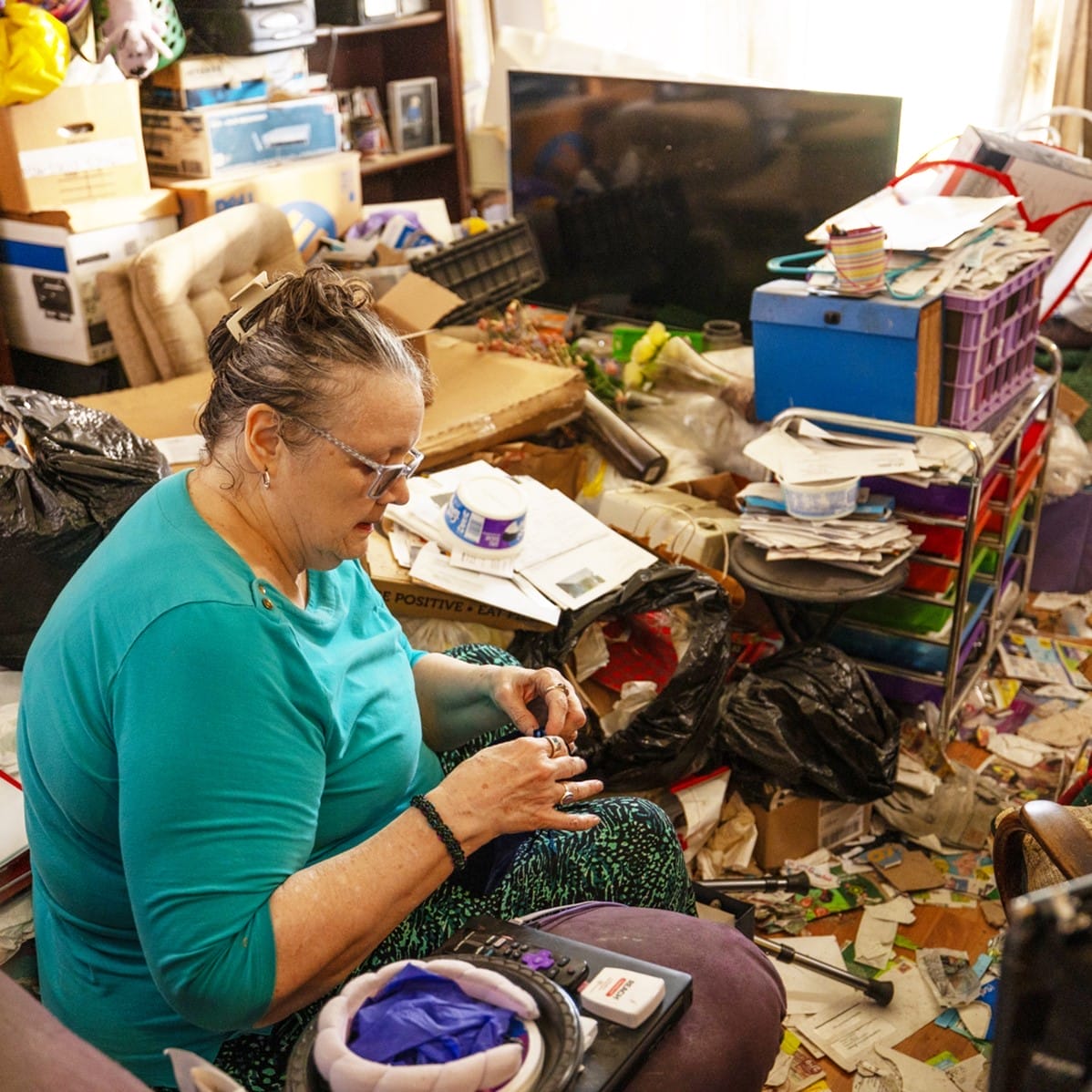
Hoarding disorder is when someone has a very hard time getting rid of things, even items that seem useless or broken. They feel a strong need to keep things, and just thinking about letting go can cause panic or sadness.
It’s not about laziness. It’s not about being dirty. It’s about how the brain is trying to protect itself. For many people, keeping things feels like a way to stay safe or in control, especially if they’ve been through something hard in life.
Signs of hoarding disorder might include:
When someone you love is living in a home filled with clutter, your first thought might be, “I’ve got to fix this.” You might want to step in, start tossing things, or give them an ultimatum. After all, you care about them and you’re scared for their safety.
But here’s the hard truth: Confronting someone with a hoarding disorder in a harsh or forceful way almost never works. In fact, it can make the problem worse. Hoarding is deeply emotional.
If a person feels judged, cornered, or forced to let go of their things, they may shut down entirely or hold on even tighter.
You’re not alone in feeling overwhelmed. But there’s a better way to help.
Here’s what works better:
When you lead with love instead of force, you build trust, which opens the door to real change.
Progress might come slowly, but every step made with patience and compassion is a step in the right direction.
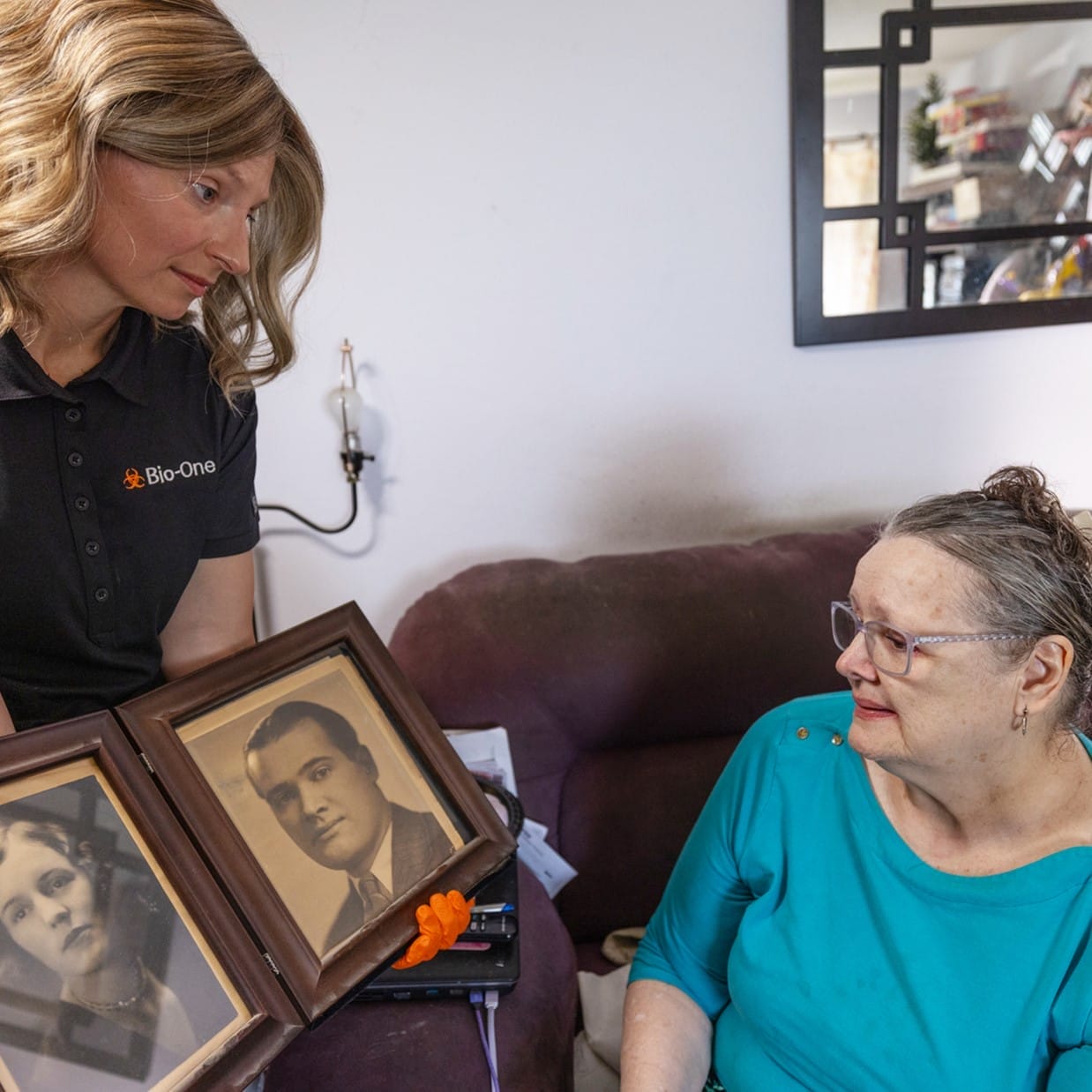
Loving someone with a hoarding disorder isn’t easy. You may feel tired, angry, confused, or even hopeless. You might be trying to help while also juggling work, family, and your own emotions. It’s a lot to carry.
You care deeply, and that’s why you’re here, trying to learn more. But you also need care. Your feelings matter, too.
So many people are in the same situation—quietly worrying about a parent, sibling, spouse, or friend struggling. It can feel isolating, especially if others don’t understand. That’s why it’s important to reach out and get support for yourself, not just for your loved one.
Here are some ways to take care of yourself:
At Bio-One, we’ve seen how tough this road can be for families. That’s why we show up with compassion, not judgment, for your loved one, and for you.
You’re not failing. You’re not alone. You’re doing your best. And that’s enough.
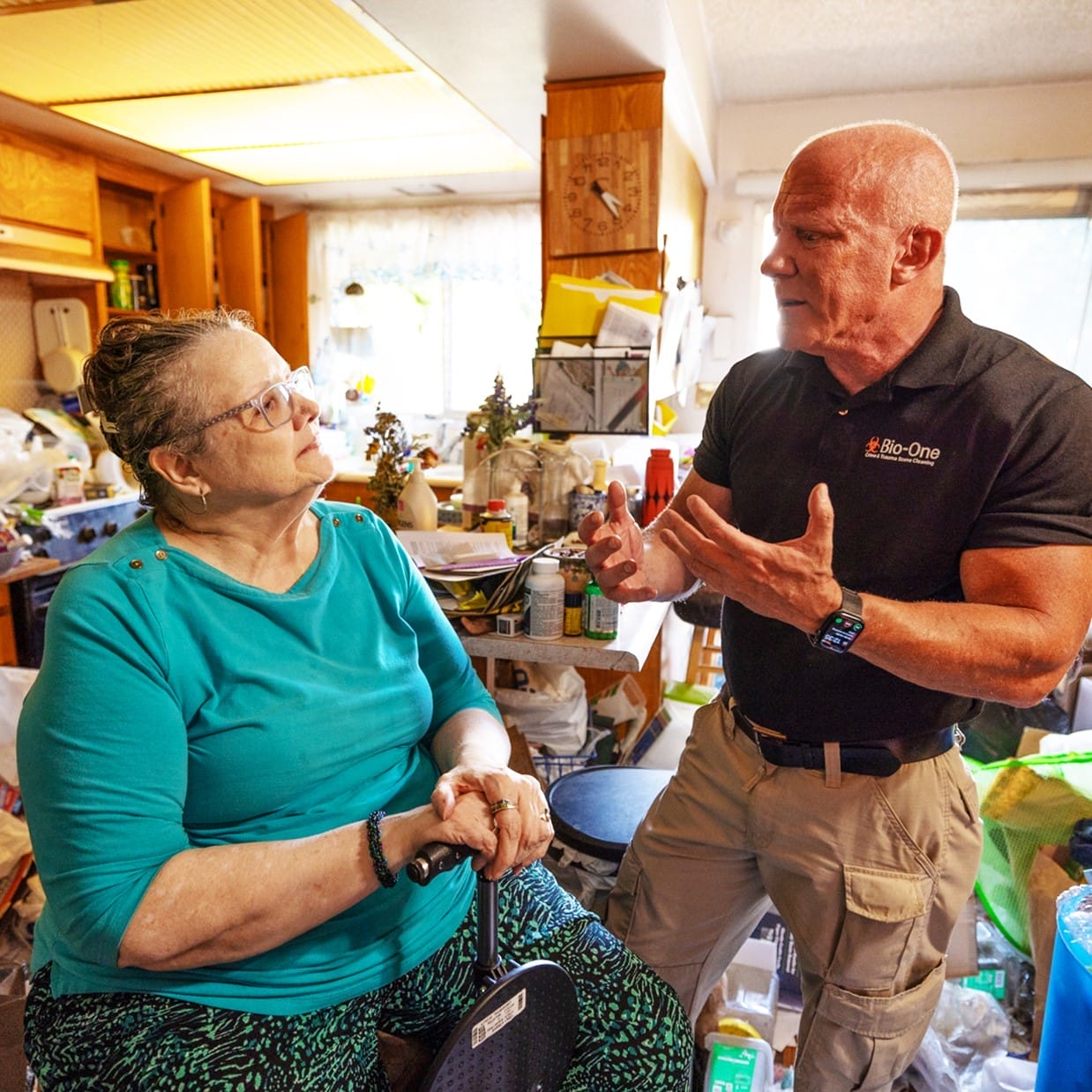
Sometimes, the situation is too big to handle by yourself. That’s where we come in.
At Bio-One of Glendale, we’ve helped thousands of families just like yours. Our trained technicians know how to clean cluttered homes with care and compassion. We don’t judge. We listen, we understand, and we’re here to help.
We work gently and respectfully to make the space safer and more comfortable. And we involve your loved one every step of the way, so they feel more in control and less afraid.
If someone you love has a hoarding disorder, it can feel overwhelming. But with time, support, and understanding, things can get better.
Progress doesn’t happen all at once. But each kind word, each small step, and each moment of support makes a big difference.
And when you need help, we’re here.
How to Help a Loved One With a Hoarding Disorder
Why Cleaning a Hoarding Mess is a Job for a Professional Hoarding Cleanup Service
Hoarding: Recognizing the Signs and Seeking Help. Finding hope and motivationto clean up your home.
Hoarding disorder is a mental health condition where a person has a very hard time getting rid of things. They often feel strong emotional attachments to items and may become overwhelmed or upset when asked to let them go.
No. Hoarding is not the same as being messy or disorganized. It’s a mental health struggle that usually involves deep emotions like fear, anxiety, or past trauma.
For someone with a hoarding disorder, letting go of items can feel scary or painful. What might look like trash to others might feel safe or important to them. Cleaning without their consent can cause stress or damage trust.
Start with kindness and concern. Use “I” statements like “I’m worried about your safety,” and avoid blaming. Focus on how you can support them instead of trying to take control.
This is common. Hoarding can bring up strong feelings. Try to stay calm and patient. Don’t push too hard. Give them time, space, and support. It may help to talk with a counselor or mental health professional for guidance.
No. Throwing items away without permission can break trust and make the situation worse. It’s important to involve your loved one in every step and help them feel safe and respected.
Helping someone with a hoarding disorder can be exhausting. Make time for yourself, set healthy boundaries, talk to a trusted friend, and consider joining a support group. You matter too.
Yes. Many people with hoarding disorder can improve with the right kind of help. Therapy, support from loved ones, and professional cleanup services that understand the emotional side of hoarding can all make a big difference.
If the clutter is unsafe, overwhelming, or beyond what you can manage, it’s time to call in trained professionals. At Bio-One, we approach each cleanup with care, compassion, and respect for your loved one.
Yes. We understand how emotional hoarding can be. Our goal is to make the space safer and more livable while treating everyone involved with dignity. We don’t judge. We’re here to help.
We spend a big part of our lives at work. It’s where we talk with others, solve problems, and try our best to do a good job. But sometimes, people show up to work while quietly struggling inside. Behind smiles and small talk, many are dealing with stress, sadness, or feelings they don’t know how to share.
Mental health struggles are more common than most people realize. And when no one talks about them, the silence can be harmful.
This Mental Health Awareness Month, Bio-One of Glendale wants to talk about something that doesn’t get enough attention. We want to help more people understand how important it is to support mental health at work. Because when someone feels safe enough to open up, it might not just help them feel better. It could actually save their life.
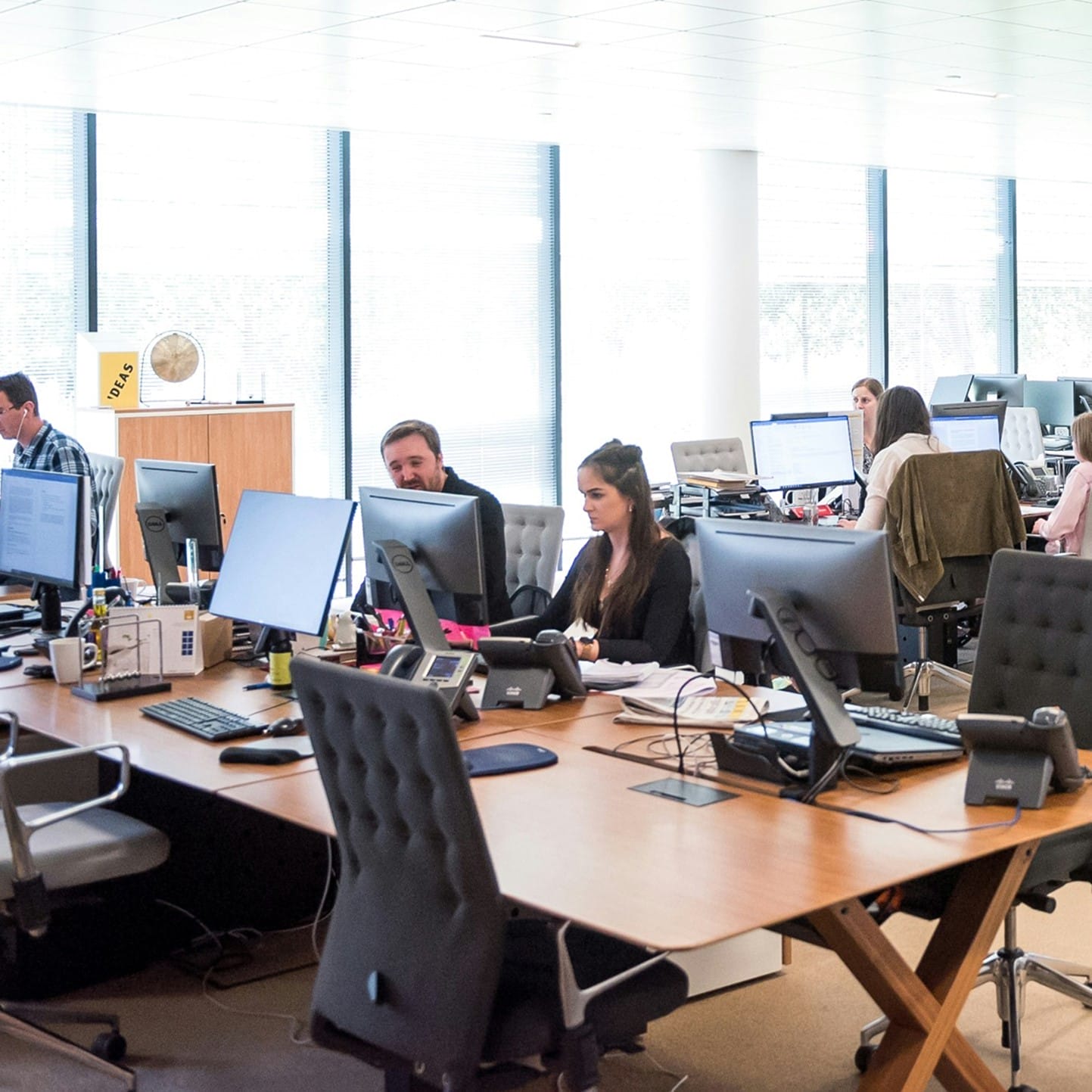
Mental health challenges don’t stop when someone walks into work. If a person is feeling anxious, depressed, or overwhelmed at home, those feelings usually come with them to the office, the warehouse, or the job site.
Many people do their best to keep going. They show up, smile, and try to focus. But on the inside, they might be hurting. They could be dealing with grief, trauma, stress, or other serious mental health struggles, and no one around them even knows.
Why don’t more people speak up?
Because they’re afraid.
So instead, they stay silent. And that silence can make things worse.
At Bio-One, we’ve seen what happens when people suffer in silence. That’s why we believe it’s important to create spaces, especially at work, where people feel safe talking about what they’re going through.
It’s not always easy to tell when someone is having a hard time. At work, many people try to hide what they’re feeling so they can “push through” the day. But there are often small signs that can let us know when a coworker or friend might be struggling with their mental health.
Here are a few things to watch for:
These signs might not seem like much at first. But together, they can show that someone is not okay.
Even if you’re not sure, it’s always a good idea to check in. A simple “Hey, I noticed you’ve seemed a little off. Want to talk?” can let them know they’re not alone.
Sometimes, just being seen and heard can help someone take the next step toward getting support.

When people feel like they can't talk about their mental health, it can make everything worse. Silence often leads to shame. And shame can make someone feel even more alone.
At work, this silence can feel extra heavy. Someone might be struggling every day, but if they believe no one will understand or they’ll be judged, they may never speak up. Instead of asking for help, they keep everything inside.
That kind of isolation can be dangerous.
At Bio-One, we’ve responded to tragic calls where someone lost their life to suicide. It doesn’t just happen at home. We’ve been called to clean up offices, warehouses, and other workspaces where a person felt there was no way out.
Many of those lives might have been saved if they had felt safe enough to speak up.
This is why it matters to talk about mental health at work. Because when we make space for honest conversations, we make it easier for people to get the help they need, before it’s too late.
You don’t have to be a manager or part of the HR department to make a difference. Every person in a workplace can help create a space where mental health is talked about openly and kindly.
Here are some simple ways to start:
These small actions help build trust. And trust creates a workplace where people feel more supported, connected, and safe to be honest about what they need.

Leaders have a powerful role in shaping workplace culture. When managers talk openly about mental health and support their teams, it sends a clear message: it’s okay to speak up, and it’s okay to need help.
Here are a few ways leaders can make a real difference:
When leadership takes mental health seriously, it sets the tone for the entire workplace. It helps build a culture of care, and that can save lives.
Talking about mental health at work might seem small, but it can have a huge impact. It’s not just a kind thing to do. It’s a real form of suicide prevention.
When people feel like they can be honest about how they’re doing, they’re more likely to get the help they need. A caring conversation at work could be the moment that helps someone keep going.
Here’s what open, supportive workplaces can offer:
These things may seem simple, but they can make a life-changing difference.
Every conversation matters. Every person who chooses to listen, share, or care helps make the workplace a safer space for everyone.
At Bio-One of Glendale, we’re called in after some of life’s hardest moments. We clean up after tragedy, but we would much rather help prevent that tragedy from ever happening.
This Mental Health Awareness Month, we’re encouraging every workplace to take a step toward being more open, more caring, and more supportive. Whether you’re an employee, a manager, or a business owner, your words and actions matter.
One conversation can help someone feel seen.
One kind question can remind someone they are not alone.
And one safe space at work could be the reason someone chooses to stay.
Let’s work together to make sure no one suffers in silence.
Let’s make it easier to talk about mental health.
Let’s make our workplaces places where people feel supported every day.
Because sometimes, a simple conversation really can save a life.
Because many people are silently struggling, when mental health is ignored in the workplace, it can lead to isolation, shame, and even tragedy. Open conversations create safer, more supportive environments where people feel seen and are more likely to ask for help.
Look for changes such as:
Check in with them gently. Try saying, “Hey, I’ve noticed you don’t seem like yourself lately. Want to talk?” Just showing that you care can help them feel less alone.
Yes. Everyone can help create a more supportive workplace. You can lead by example, check in with others, and talk openly about your own stress or mental health experiences.
Many people are afraid of being judged, looking weak, or losing their job. That fear leads to silence, and silence can make mental health struggles worse.
Managers can:
Yes. When someone feels safe and supported, they are more likely to speak up and get help before reaching a crisis point. Honest conversations can be life-saving.
Silence can lead to shame and isolation. Bio-One has responded to suicide scenes in workplaces where people may have never felt safe enough to talk about what they were going through. That’s why early conversations matter.
Start small. Talk about stress, burnout, therapy, or self-care in everyday conversations. The more we speak openly, the less scary and “taboo” the topic becomes.
Ask someone how they’re really doing—and mean it. That one question could help them feel seen, heard, and valued. It’s a simple step that could make a big difference.
Sometimes, tragedy happens in silence. A person passes away alone, and no one notices right away. Days, maybe even weeks, go by.
Meanwhile, nature takes its course. The body begins to break down, releasing fluids and strong odors that don’t just linger—they spread. Walls, floors, and furniture absorb the damage.
Harmful bacteria and pests move in, making the home unsafe. The longer it goes unnoticed, the worse it gets. By the time someone discovers what happened, the cleanup can be overwhelming.

Most people think cleaning is simple—grab some soap, water, and maybe a little disinfectant. But in situations like this, regular cleaning just isn’t enough. The dangers run deeper than what you can see or smell.
When a body decomposes, biological fluids don’t just stay on the surface. They seep into:
As these fluids spread, bacteria and pathogens grow. The smell isn’t just unpleasant—it’s a warning sign of harmful biohazards in the air and on surfaces.
Without proper cleanup, these dangers can make people sick and cause long-term damage to the property.
Trying to clean it up without professional help can make things worse. Scrubbing or using household cleaners can spread contamination instead of eliminating it. Plus, without industrial-grade odor neutralizers, the smell can linger for months—or even years.
That’s why professionals like Bio-One are essential. Using advanced tools and proven techniques, they:
With experts handling the cleanup, property owners and tenants can focus on moving forward instead of dealing with the dangers left behind.

Unattended death cases present unique challenges for insurance adjusters. Unlike fire or water damage, decomposition introduces biohazards that can spread far beyond the immediate area.
The policyholder—whether a homeowner, landlord, or property manager—may be dealing with an emotionally overwhelming situation, making clear communication and guidance essential.
Coverage for biohazard cleanup depends on how the policy is written. Adjusters must determine:
Unattended deaths are distressing for policyholders, and adjusters are often the first point of contact. Managing these claims requires both technical expertise and compassion. Here’s how adjusters can help:
By understanding the complexities of decomposition cleanup and guiding policyholders through the process, adjusters can make a difficult situation easier while ensuring proper risk management for the insurer.

Unattended deaths aren’t just difficult—they’re delicate. As an insurance adjuster, you’re assessing property damage and guiding a policyholder through one of the most challenging moments of their life. The process can be overwhelming for them, full of questions about coverage, costs, and what comes next. That’s where Bio-One steps in.
At Bio-One of Glendale, we understand that this isn’t just another claim. It’s someone’s home, someone’s responsibility, and often, someone’s loss. We aim to make your job easier by handling the biohazard cleanup efficiently, professionally, and compassionately.
We work directly with both insurance adjusters and policyholders to ensure a smooth, stress-free process.
We take care of everything so that adjusters can focus on claim resolution. Our services include:
Insurance adjusters shouldn’t have to handle biohazard cases alone. With Bio-One, you get a partner who understands the sensitive nature of these claims and works efficiently to clean the property while keeping policyholders informed and supported.
We ensure everything is handled carefully so you can focus on what you do best.
If you’re handling an unattended death claim, let Bio-One be your trusted cleanup resource. We’re here to help every step of the way.
An unattended death occurs when someone passes away alone and their death remains undiscovered for an extended period. This can lead to significant biohazard risks due to decomposition.
Decomposition releases biological fluids and harmful bacteria that seep into flooring, walls, and furniture. Professional biohazard cleanup ensures complete decontamination, odor removal, and proper sanitization to prevent health hazards.
No, DIY cleaning can spread contamination and expose you to biohazards. Household cleaning products are not strong enough to neutralize harmful bacteria and odors. Professional cleanup is required to restore safety.
Coverage depends on the policy. Some insurance plans classify biohazard cleanup under property damage or crime scene cleanup, while others may exclude it. Check with your insurer or work with Bio-One to determine coverage.
Decomposition fluids can soak into carpets, subfloors, drywall, and even HVAC systems, causing extensive damage and requiring specialized cleaning, decontamination, and repairs.
Insurance adjusters assess the extent of contamination, determine coverage, and guide policyholders through the claims process. They may also work with biohazard remediation teams like Bio-One for damage assessments and cleanup documentation.
The duration of the cleanup depends on the severity of the situation. Bio-One responds quickly and typically completes decontamination within a few days, but structural repairs may take longer.
Yes, Bio-One provides detailed reports, before-and-after photos, and itemized invoices to assist adjusters and policyholders in processing claims efficiently.
Improper cleanup can leave harmful bacteria, lingering odors, and structural damage. This can pose serious health risks to future occupants and decrease the property’s value.
Bio-One works directly with adjusters to assess damage, provide cleanup estimates, and ensure compliance with health regulations. Our fast response times and thorough documentation make claim approvals easier and quicker.
Navigating Hoarding Disorder Together: Support Strategies for Families
At Bio-One of Glendale, we’re acquainted with the journey that brought you here. We understand you’ve already been trying to solve this problem alone—and we’re proud of you. It’s tough. You’ve been struggling out of concern for the hoarder, for you, for your family, for the property… and the list can go on.
Hoarding is complicated and messy. But you already know that.
After 20+ years of hoarding cleanup, we’ve made some observations and learned some lessons we’d like to share with you—because we feel they might help you and the hoarder.

On the outside looking in, you see clutter, chaos, and conditions that are unhealthy and hazardous, such as:

On the inside, however, you see a person—a family member—struggling and probably isn’t consciously choosing to live this way.
Hoarders hoard for various complex reasons, and the exact cause can vary from person to person. Hoarding is recognized as a mental health disorder known as "hoarding disorder."
It's essential to understand that hoarding is not just a matter of being messy or disorganized; it involves deeply ingrained thoughts, behaviors, and emotions.
Some of the primary reasons why hoarders hoard include:
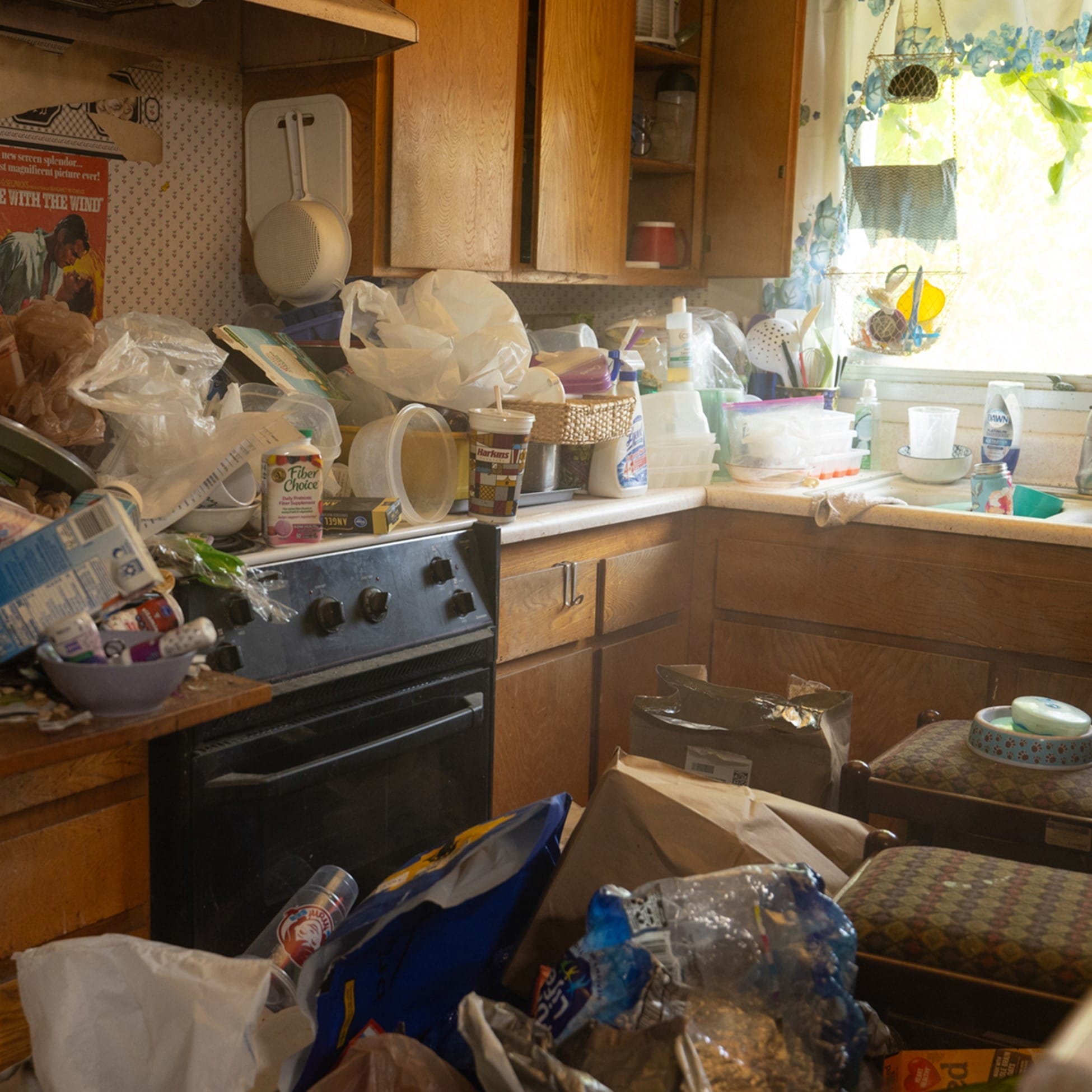
When dealing with hoarding behavior, every experience of trying to help can unfold uniquely, filled with challenges and lessons.
It is not uncommon for the initial attempt to be met with resistance. Hoarding is more than just a clutter issue; it manifests deep-seated emotional, psychological, and sometimes physical struggles. Recognizing this is a crucial first step before embarking on the journey of helping a hoarder.
The journey is rarely linear. There are often setbacks where progress might seem to reverse. Stressful events or emotional lows could trigger this.
Not great, right?
When dealing with a hoarder and cleaning up their belongings, you might experience a range of complex and intense emotions.
Here are some common feelings and emotions you may go through:
It's important to acknowledge that these emotions are normal when dealing with hoarding. Consider seeking therapy or support groups to help manage these feelings and learn effective strategies for assisting your loved one in addressing the hoarding disorder.

When you approached the hoarder about their hoarding, the hoarder may have experienced a wide range of emotions and reactions.
These can include:
Appraising a hoarder with empathy, understanding, and patience is essential. Hoarding disorder is a complex mental health condition, and hoarders often need professional intervention and support to address their underlying issues.
Consider involving therapists, counselors, or hoarding cleanup specialists to facilitate productive conversations and provide guidance on the path to recovery.
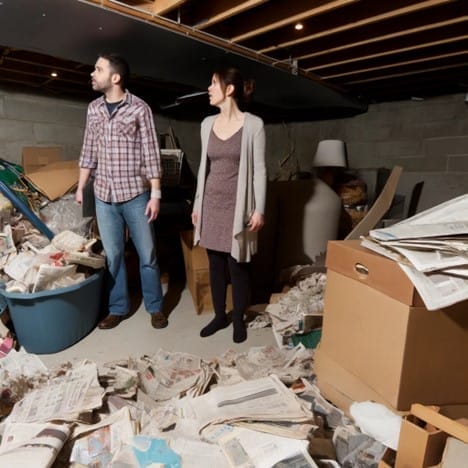
It's essential to understand how to provide support effectively. Hoarding Disorder often leads to a refusal of help, which can be frustrating for family members. To make a difference in your loved one's life, it's crucial to comprehend why they are reluctant to accept assistance.
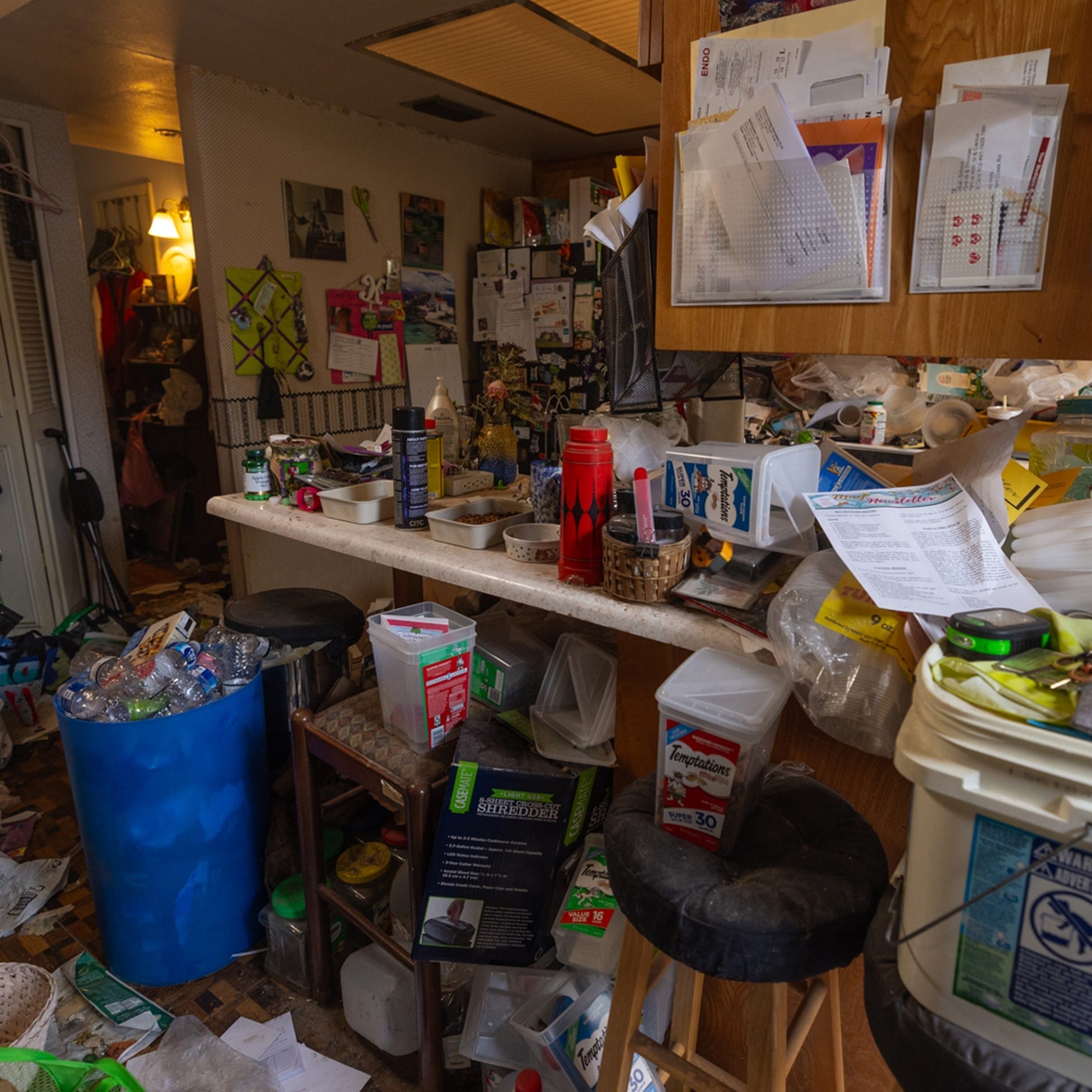
There are no shortcuts or one-size-fits-all solutions to dealing with hoarding disorder. It's a complex issue with deep-rooted psychological factors and emotional complexities. However, as you've embarked on this journey as a concerned family member or a friend, you've already taken a significant step.
You've shown care, patience, and understanding, and that's commendable. Remember, you're not alone in this journey. There are resources, support groups, and professionals who specialize in hoarding disorder and its treatment.
At Bio-One, we've witnessed countless stories of transformation. We've seen homes go from chaos to cleanliness, and we've watched individuals recover from hoarding disorder.
The key is persistence and empathy. Understand that recovery may be slow, with ups and downs, but every small step counts. Seek professional guidance, involve therapists, and educate yourself about the condition. Your loved one needs your support more than ever.
Ultimately, remember that hoarding is not a reflection of failure but a manifestation of deeper struggles. By approaching it with compassion and determination, you can help your loved one find a path to healing and reclaim their life.
For immediate expert hoarding cleanup service, contact Bio-One of Glendale today at (623) 888-4276. Your health and peace of mind are our top priorities. Let our professional local team help you restore your environment to a safe and clean condition.
Hoarding cleanup requires specialized training to handle the complexities safely and effectively, such as removing hazardous materials and navigating challenging environments.
Hoarding cleanup involves dealing with large volumes of items, potential hazards, and emotional challenges beyond regular cleaning.
Potential hazards include mold, pests, structural damage, sharp objects, and hazardous chemicals.
While family members may assist, professionals are better equipped with the tools and knowledge to handle hoarding situations safely.
The duration depends on the severity and size of the hoard, but professionals work efficiently to restore safety and cleanliness as quickly as possible.
Professionals aim to conduct the cleanup process respectfully and compassionately, working closely with the homeowner to make informed decisions.
Skilled teams follow strict protocols to safely identify, handle, and dispose of hazardous materials in compliance with regulations.
They often undergo specialized training in handling hazardous materials, biohazards, and cluttered environments to ensure safe and effective cleanup.
Legal issues regarding property rights and safety regulations can arise, so it's vital to consult professionals familiar with them.
A: Approach the situation empathetically and encourage them to seek professional help to assist with the cleanup and any underlying issues.
Losing a loved one is always hard. But when someone passes away alone, it brings extra challenges. Families must handle their grief and difficult decisions about what comes next.
An unattended death—when someone dies without anyone around—can go unnoticed for days or even weeks. This guide will help you understand the risks, the cleanup process, and the emotional steps after such a loss.
Why Unattended Deaths Are So Difficult
When someone passes away alone, several things can happen:
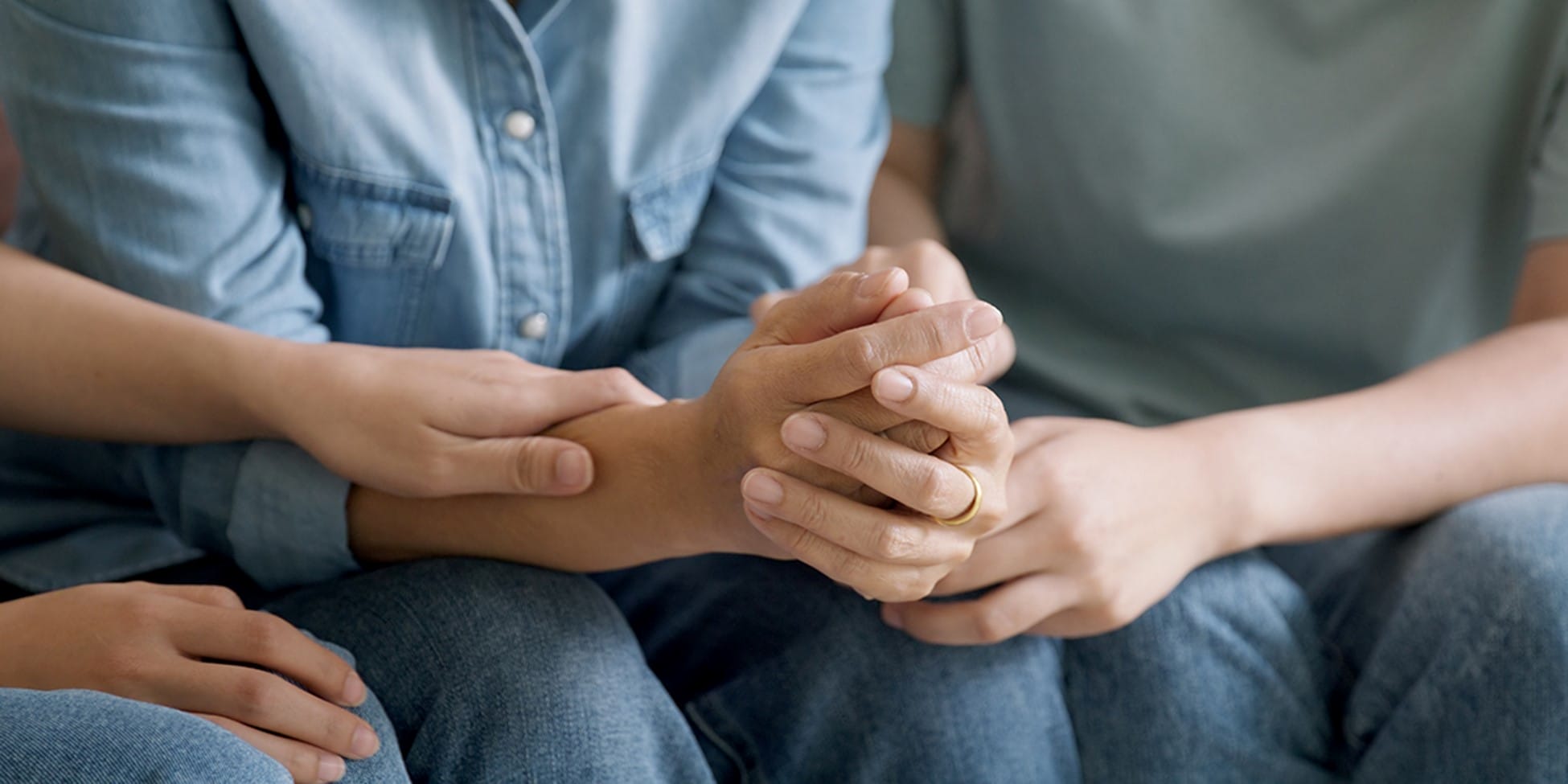
The Hidden Dangers of Unattended Death
When a body decomposes, it releases fluids, bacteria, and gases that can spread disease and damage property. Here’s what families should know:
These risks make professional cleanup a must.
Why You Should Never Attempt Cleanup Yourself
Many people think they can clean up an unattended death themselves. But this is not only dangerous—it can make the situation worse.
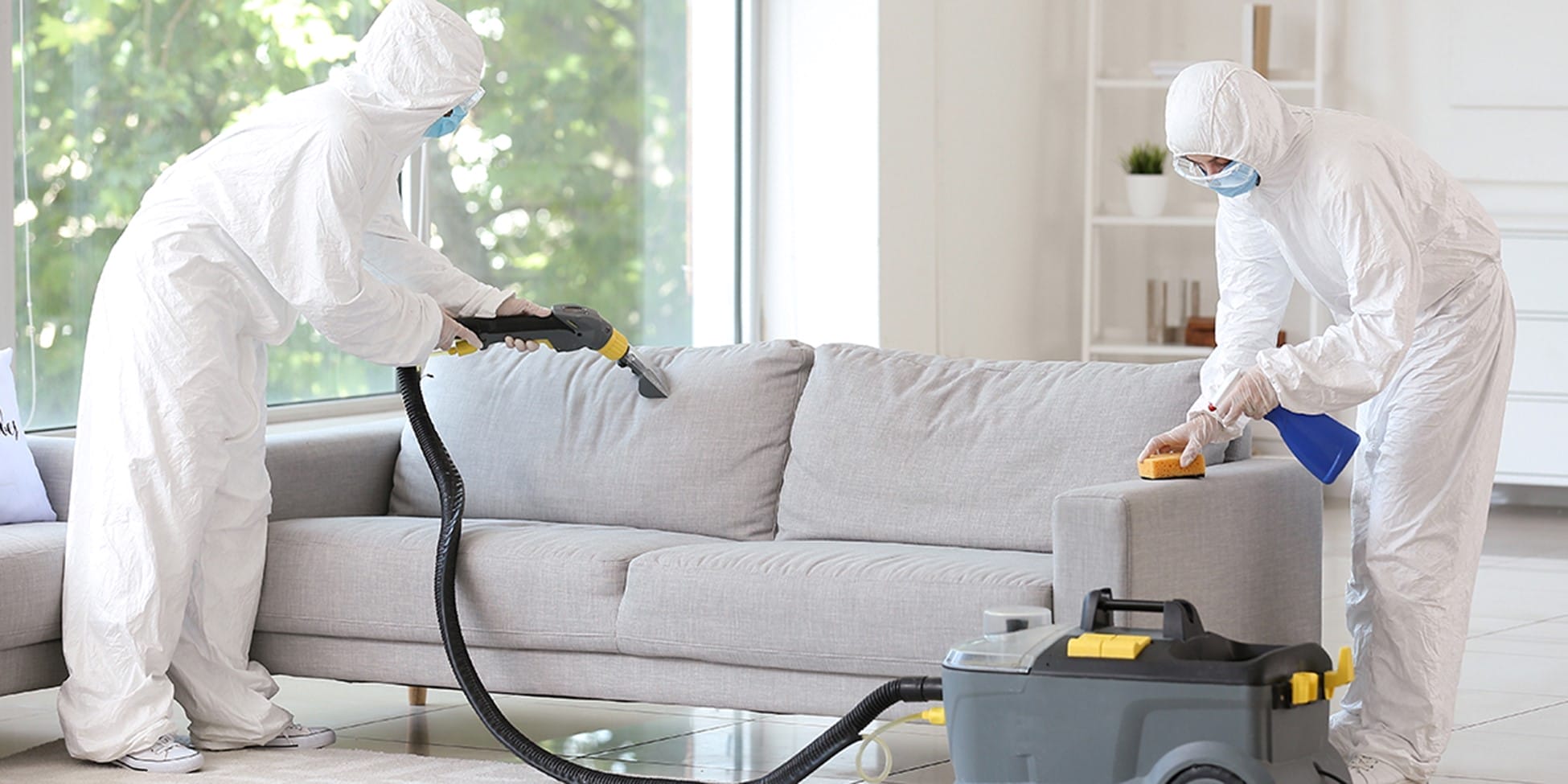
The Role of Bio-One’s Professional Cleanup Services
Hiring a professional Bio-One team helps protect your health, your home, and your well-being. Here’s what they do:
What to Do Immediately After Discovering an Unattended Death
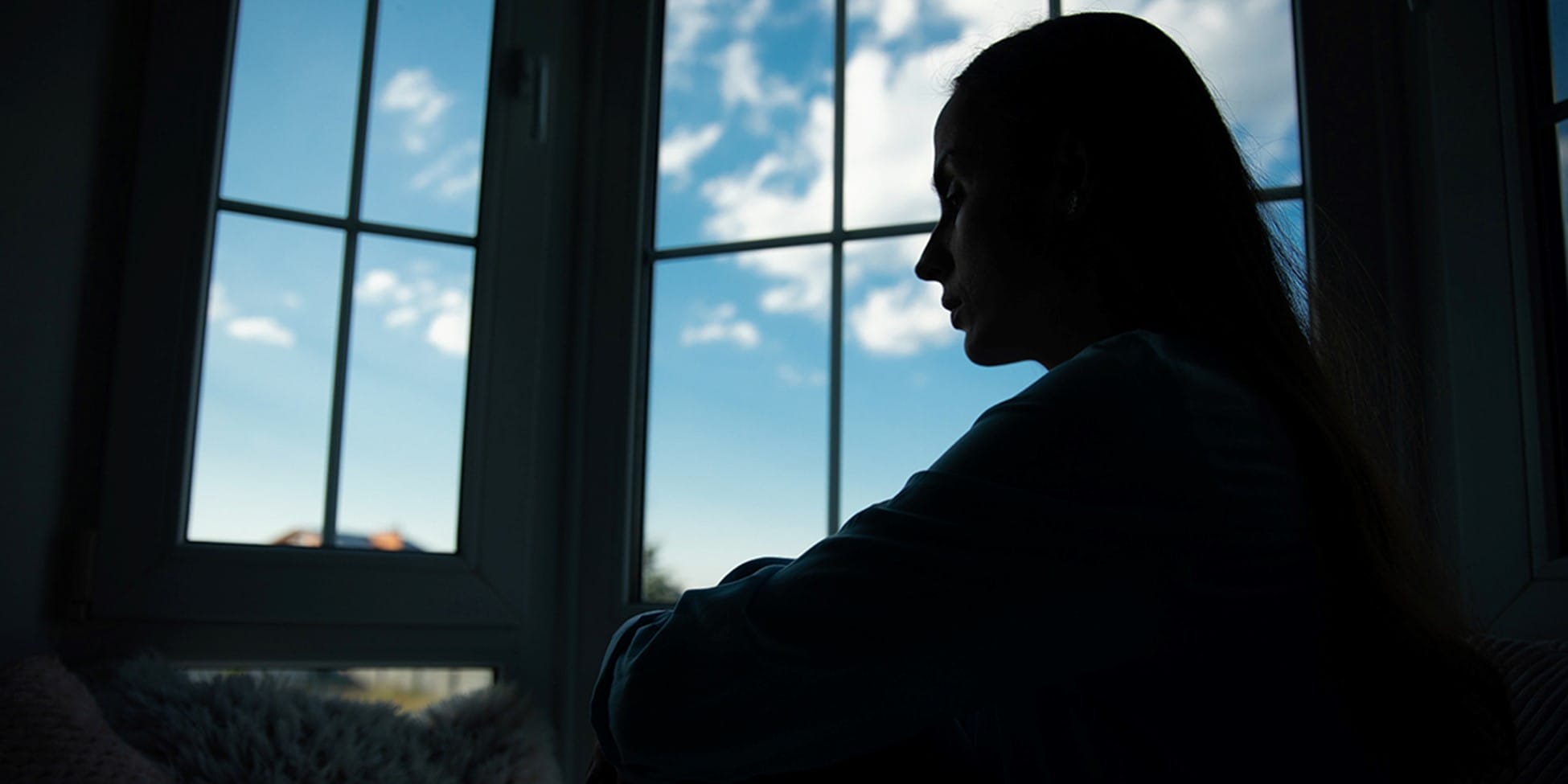
Coping with Grief After an Unattended Death
Grief after an unattended death is different. You may feel shock, guilt, or regret. Healing takes time, but these steps can help:
An unattended death can be devastating, but families don’t have to face it alone. Bio-One can restore the space, while grief counselors and support groups can help with emotional healing.
With time, care, and the proper support, families can begin to heal and move forward while honoring their loved one’s memory.
FAQ
What is an unattended death?
An unattended death is when someone dies without anyone around—it can go unnoticed for days or even weeks.
Why is professional cleanup necessary after an unattended death?
Professional cleanup is essential due to the health risks posed by biohazards, such as bodily fluids and decomposition, which can carry harmful pathogens and contaminate the environment.
What are the health risks associated with an unattended death?
Health risks include exposure to bacteria, bodily fluids, gases, and airborne pathogens, which can lead to infections and other serious health issues if improperly handled.
What property damage can result from an unattended death?
Property damage may include stains and corrosion from bodily fluids, mold, mildew growth, structural damage to floors and walls, and contamination of personal belongings.
Can families attempt to clean up after an unattended death themselves?
It is strongly discouraged. Decomposing bodies poses biohazard risks, and improper cleanup can lead to further contamination and health issues. Certified professionals use their training to handle such situations safely and legally.
How do professional cleanup services handle the biohazards after an unattended death?
Cleanup services use specialized equipment, EPA-approved disinfectants, and personal protective equipment (PPE) to safely remove biohazardous materials and sanitize the affected area.
What steps should families take immediately after discovering an unattended death?
Families should contact local authorities, avoid attempting to clean the area themselves and seek assistance from professional biohazard cleanup services.
How can families cope with the emotional trauma of an unattended death?
Families can seek grief counseling, join support groups, and memorialize their loved one through tributes and ceremonies to help process the loss and begin healing.
How does the cleanup process help families move forward?
By handling the physical cleanup, professionals relieve families of the emotional burden of dealing with biohazards, allowing them to focus on emotional healing and recovery.
What additional support do professional cleanup services provide after an unattended death?
In addition to cleanup, many services offer assistance with insurance claims, provide grief counseling referrals, and help guide families through the emotional and practical challenges of the situation.
Insurance adjusters are critical in managing complex and often emotionally charged claims. Whether dealing with the aftermath of a crime scene, an unattended death, a hoarding situation, or a hazardous spill, they must ensure that affected properties are cleaned and restored efficiently while adhering to strict safety and regulatory standards.
Selecting the right biohazard cleanup partner is not just about hiring a cleaning company—it’s about finding a professional team that understands the urgency, documentation requirements, and legal considerations associated with biohazard remediation.
Not all biohazard cleanup companies operate at the same expertise, professionalism, or compliance level. A qualified partner helps streamline the claims process, minimizes liability risks, and ensures that all cleanup efforts meet health and environmental regulations.
These questions will ensure you’re working with a reliable, certified, and experienced team that handles sensitive cases with care and efficiency.
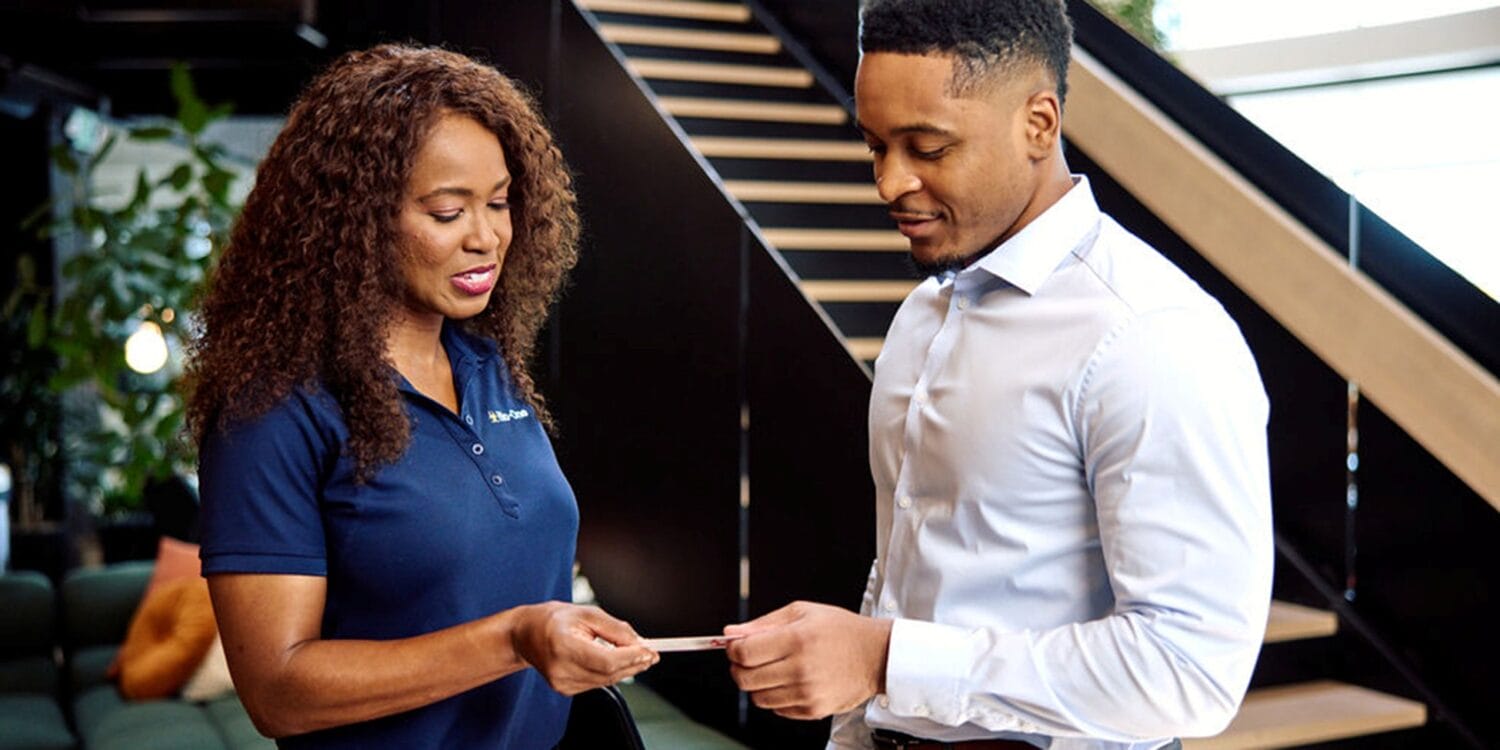
Biohazard cleanup is not the same as standard cleaning. It involves exposure to potentially infectious materials, including blood, bodily fluids, drug residues, and hazardous waste.
If not handled properly, biohazard contaminants can pose serious health risks to residents, property owners, and even the cleanup crew. Improper handling or disposal can also lead to legal and regulatory consequences for insurance companies and property owners.
Working with an untrained or uncertified company increases the risk of cross-contamination, liability issues, and non-compliance penalties.
When selecting a biohazard cleanup company, insurance adjusters should verify that the team is properly trained and certified in handling hazardous materials. Key certifications and qualifications to look for include:
Insurance adjusters should ask for proof of certification and ongoing training to ensure that cleanup technicians remain current with the latest safety protocols and best practices.
At Bio-One, we take training and compliance seriously. Our technicians undergo rigorous certification programs, including:
By choosing Bio-One, insurance adjusters can be confident that they are working with a trusted, fully certified biohazard cleanup team that prioritizes safety, compliance, and professionalism in every job.
Insurance adjusters are responsible for processing claims quickly and efficiently while ensuring all services are necessary, properly documented, and within policy guidelines. A biohazard cleanup company unfamiliar with the insurance claims process can create unnecessary delays, incomplete paperwork, or billing discrepancies, complicating the adjuster’s job.
By working with a cleanup partner experienced in insurance documentation, direct billing, and industry regulations, adjusters can ensure a smoother claims process and reduce stress for all parties involved.
Insurance adjusters should verify that the biohazard cleanup company they work with has direct experience handling insurance claims, including:
At Bio-One, we work closely with insurance adjusters to streamline the claims process and reduce administrative burdens. Our experience in handling biohazard-related insurance claims allows us to provide:
By partnering with Bio-One, insurance adjusters gain a trusted, experienced biohazard remediation partner who understands the importance of documentation, efficiency, and compliance in claims.
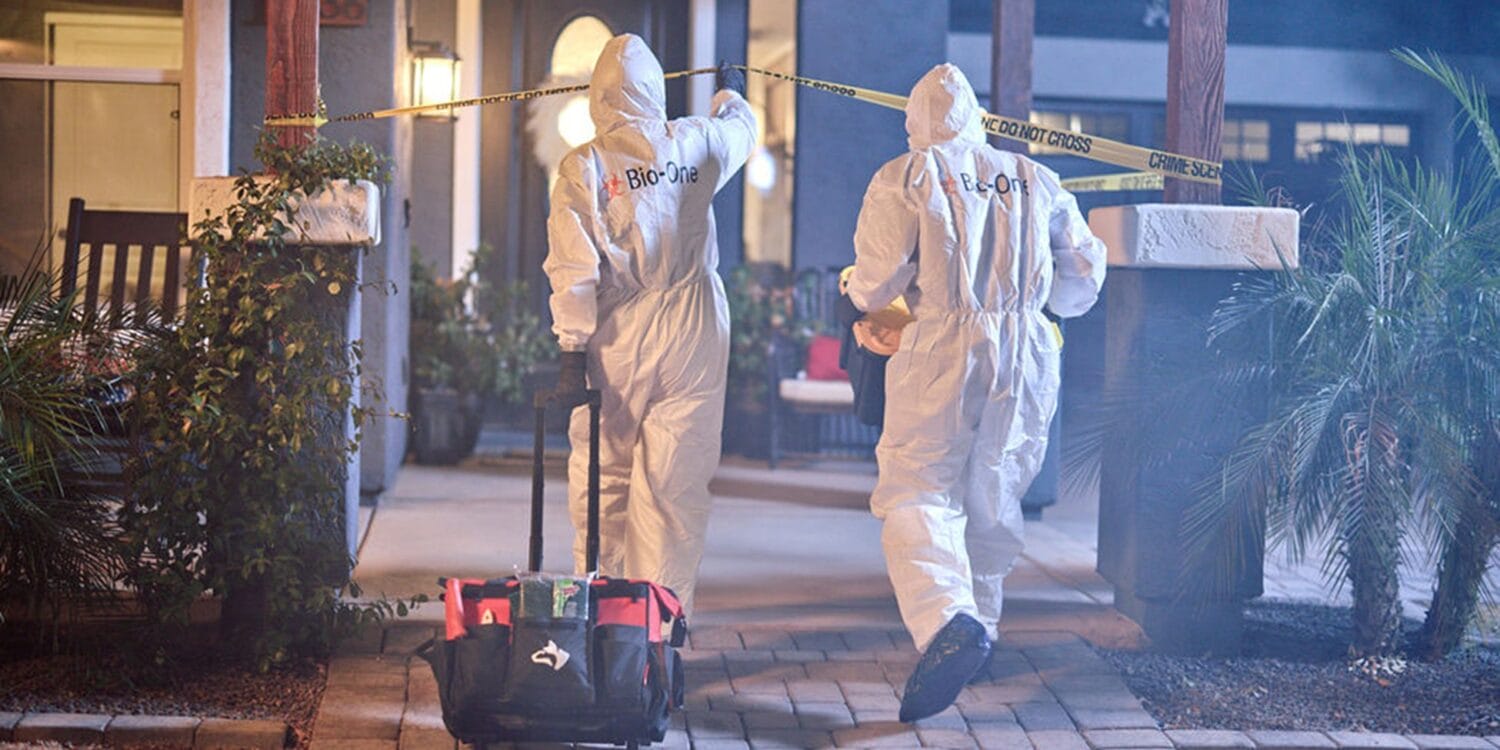
In biohazard situations, time is critical. Whether dealing with an unattended death, a crime scene, a hoarding situation, or a sewage backup, the longer biohazardous materials remain on-site, the greater the risk to health, safety, and property integrity.
For insurance adjusters, a fast-acting cleanup partner reduces claim complexity, limits secondary damage, and helps clients return to normalcy faster.
When choosing a biohazard cleanup company, insurance adjusters should ensure they provide:
At Bio-One, we understand that biohazard emergencies require immediate action. That’s why we offer:
By choosing Bio-One, insurance adjusters can trust that their clients will receive immediate, expert care, minimizing further damage and ensuring claims are handled quickly and efficiently.
Biohazardous materials—including blood, bodily fluids, infectious waste, and contaminated materials—cannot be treated like regular trash. Improper handling, transport, or disposal of these substances can result in:
For insurance adjusters, working with a biohazard cleanup company that follows proper disposal procedures ensures compliance, prevents liability risks, and protects all parties involved.
When vetting a biohazard cleanup company, insurance adjusters should confirm that the company:
At Bio-One, safety and compliance are our top priorities. We strictly follow all federal, state, and local biohazard disposal regulations, ensuring that every job is handled with the utmost care.
By choosing Bio-One, insurance adjusters can trust that biohazardous materials will be handled safely, legally, and efficiently, reducing liability risks and ensuring a fully restored environment.
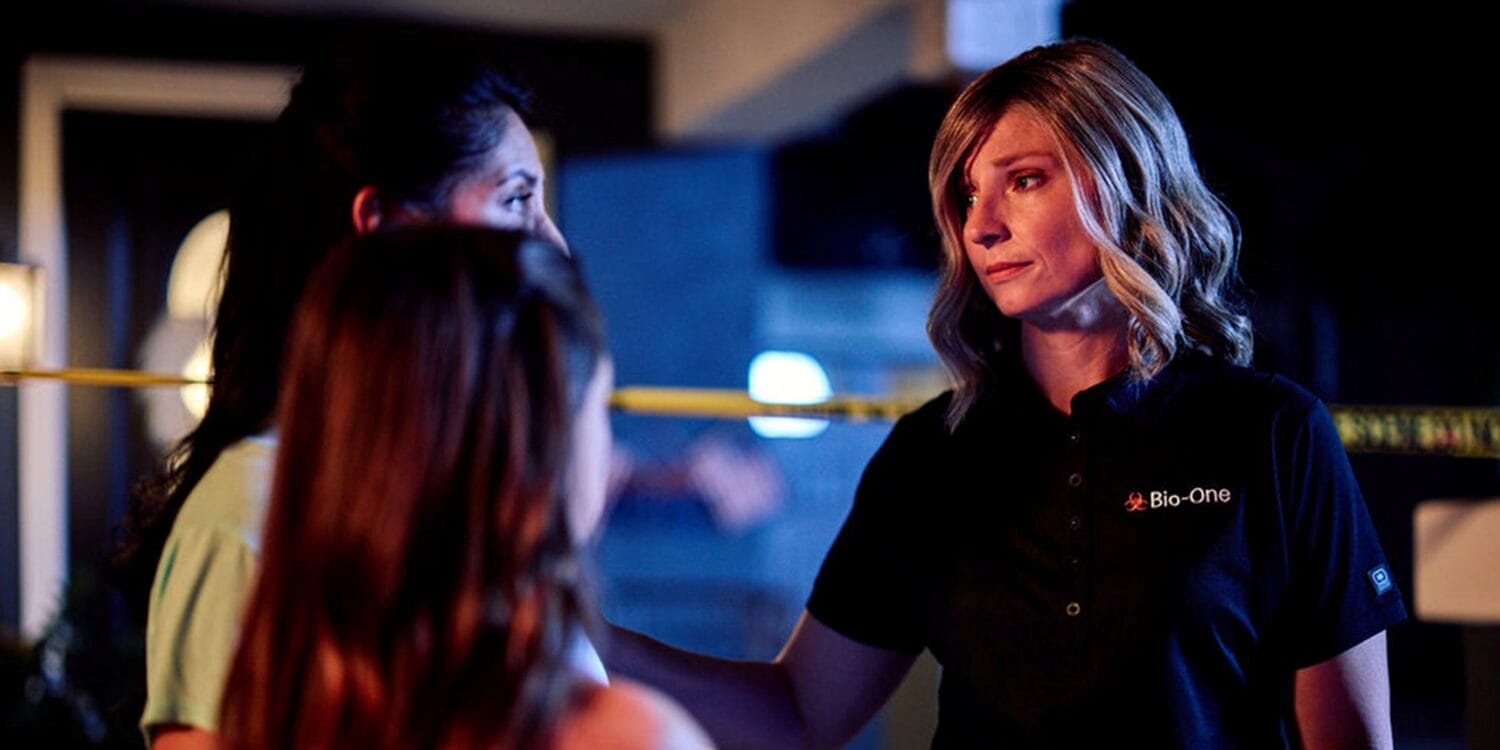
Biohazard cleanup is more than just a technical job—it often involves deeply emotional and traumatic situations. Whether responding to a crime scene, an unattended death, a suicide, or a hoarding situation, cleanup crews are often working in the homes and businesses of individuals who are grieving, in distress, or facing significant hardship.
For insurance adjusters, choosing a compassionate, professional, and discreet biohazard cleanup partner ensures that affected individuals receive support during a difficult time while protecting the property owner's or business's reputation.
When selecting a biohazard cleanup company, insurance adjusters should ensure that the team demonstrates:
At Bio-One, we understand that our work goes beyond cleaning—it’s about helping people during some of the most challenging moments of their lives. We approach every job with compassion, discretion, and professionalism to support those affected.
By partnering with Bio-One, insurance adjusters can ensure clients receive expert biohazard cleanup services with the care and respect they deserve, providing peace of mind during an incredibly challenging time.
Biohazard cleanup often involves more than simply removing hazardous materials. Some cases—hoarding situations, crime scenes, trauma events, and severe property neglect—require a full range of remediation services to restore a property to a livable or business-ready condition.
Working with a full-service remediation company simplifies the claims process for insurance adjusters. It reduces the need for multiple vendors and ensures that the property is completely restored in a coordinated effort.
When selecting a biohazard cleanup company, insurance adjusters should seek a partner that offers a comprehensive suite of services, including:
At Bio-One, we provide end-to-end remediation services, ensuring that properties are cleaned and restored to a safe and habitable condition.
By partnering with Bio-One, insurance adjusters can streamline claims by working with a single, trusted provider that offers both biohazard removal and complete property remediation. This ensures clients receive the most thorough and professional service possible.
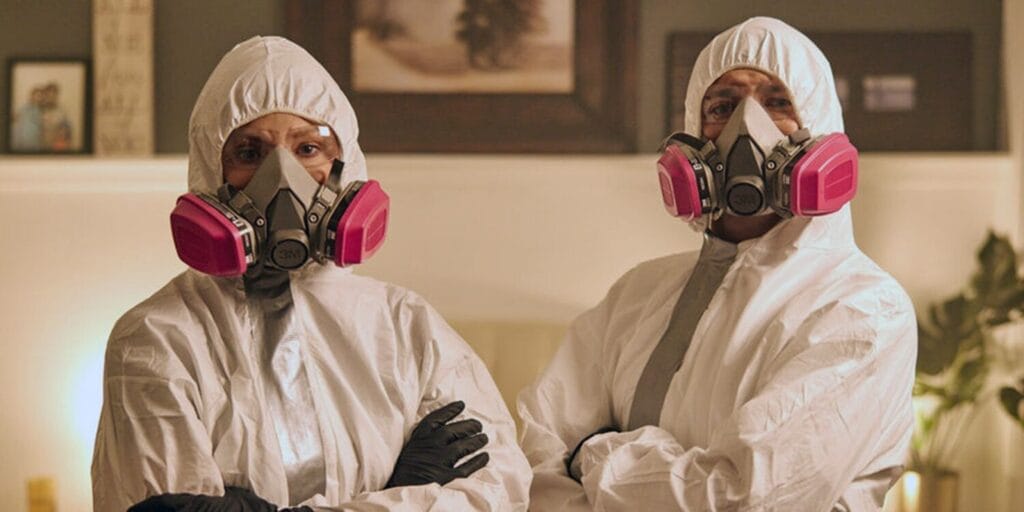
Selecting the right biohazard cleanup partner ensures a smooth and efficient claims process. Insurance adjusters must navigate complex cases involving health risks, regulatory requirements, and emotional sensitivities, so working with a qualified and experienced remediation team is essential.
By carefully vetting biohazard cleanup companies with key questions—about certifications, insurance expertise, emergency response times, regulatory compliance, discretion, and additional services—adjusters can avoid delays, compliance issues, and costly mistakes.
A trusted biohazard remediation partner doesn’t just clean up hazardous materials; they streamline documentation, reduce liabilities, and provide both adjusters and property owners peace of mind.
At Bio-One, we check all the boxes—offering:
By partnering with Bio-One, insurance adjusters gain a dependable ally who understands biohazard claims' urgency, complexity, and sensitivity. Our experience, responsiveness, and commitment to excellence make us the preferred choice for insurance professionals nationwide.
A qualified biohazard cleanup team should have certifications in Bloodborne Pathogens Training, Hazardous Materials Handling, OSHA Compliance, and adherence to EPA and state disposal regulations. These certifications ensure they follow safety protocols and legal requirements.
Yes, Bio-One has extensive experience working with insurance adjusters. We provide thorough documentation, itemized invoices, and direct insurance billing to streamline the claims process and reduce the administrative burden.
Bio-One offers 24/7 emergency response and can dispatch trained technicians within hours to prevent further contamination, reduce health risks, and ensure a rapid cleanup process.
Working with an untrained or uncertified company can lead to improper decontamination, cross-contamination risks, legal and regulatory penalties, and increased liability for insurance adjusters and property owners.
We strictly follow OSHA, EPA, and state regulations, working with licensed medical waste disposal facilities to safely transport and dispose of biohazardous materials.
Bio-One provides hoarding cleanup, odor removal, sewage and water damage remediation, crime scene decontamination, trauma cleanup, and infectious disease disinfection.
Our team arrives in unmarked vehicles, follows trauma-informed training, and communicates with sensitivity and respect. We prioritize privacy and work discreetly to minimize further distress for those affected.
Adjusters should verify certifications, check for experience in handling insurance claims, confirm emergency response capabilities, review compliance with disposal regulations, and assess the company’s reputation for professionalism and discretion.
Fentanyl has become a significant concern for law enforcement agencies across the country as its presence continues to rise in communities of all sizes.
This potent synthetic opioid is not only responsible for a growing number of overdose deaths but also presents a grave occupational hazard for officers encountering it during arrests, traffic stops, evidence collection, and other duties.
The risks associated with fentanyl exposure go far beyond the crime scene - officers face potential health emergencies from accidental contact or inhalation, even in small amounts.
The danger lies in fentanyl’s extreme potency - up to 100 times stronger than morphine and 50 times stronger than heroin. Just a few milligrams, an amount barely visible to the naked eye, can cause severe respiratory distress, unconsciousness, or worse. When improperly handled, fentanyl can contaminate vehicles, evidence rooms, and even personal gear, creating ongoing risks for officers and those around them.
As the fentanyl crisis intensifies, understanding how to manage exposure and properly handle contaminated environments has become essential for officer safety. Professional cleanup services, equipped with the right expertise and tools, are critical in neutralizing these hazards and preventing further risks.
Here’s what every officer and law enforcement agency needs to know about the dangers of fentanyl exposure and the indispensable role of professional decontamination services in protecting those who protect our communities.
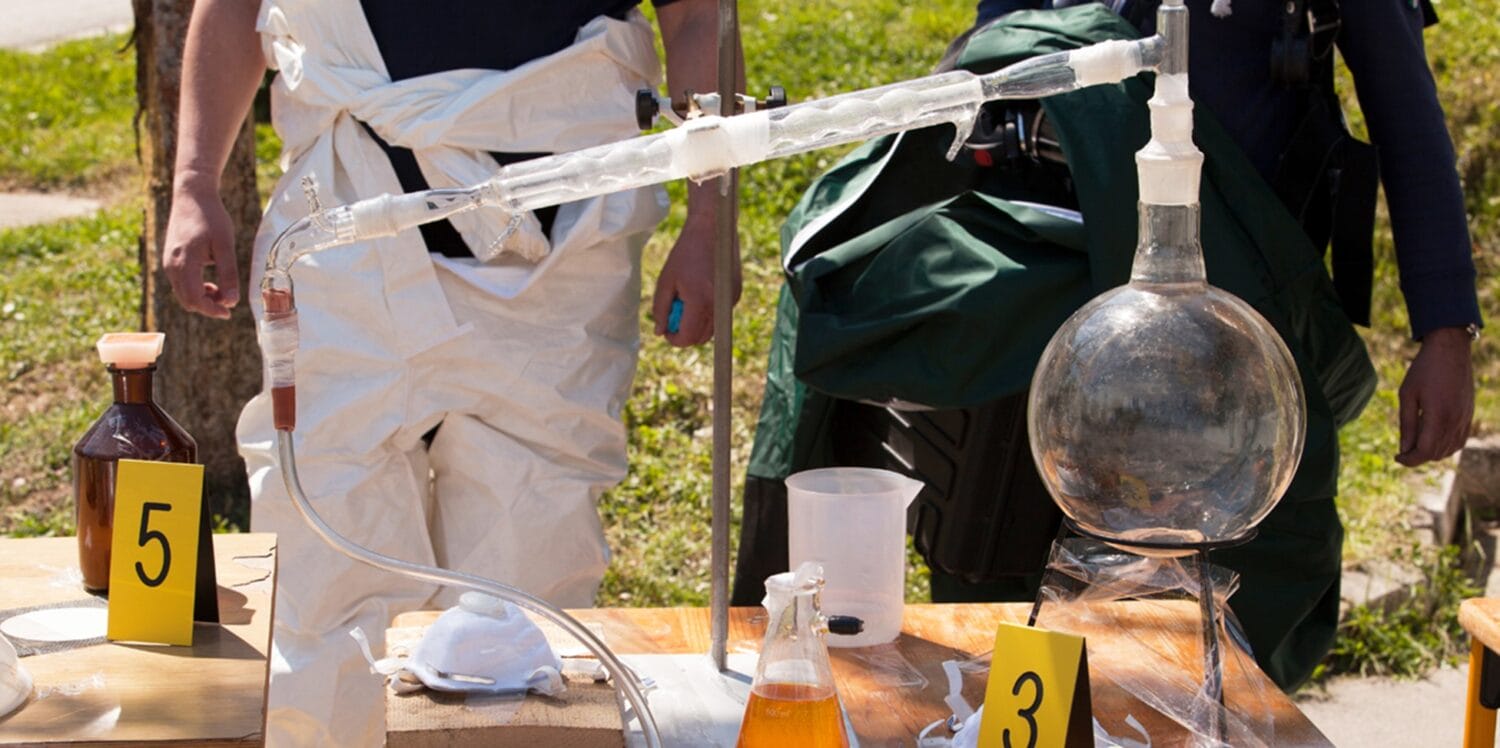
Fentanyl exposure presents a silent but severe threat to law enforcement officers who encounter this potent opioid in their line of duty.
Its extreme potency and ability to contaminate environments pose unique challenges that require heightened awareness and proactive measures. Here are the primary dangers of fentanyl exposure and why addressing them promptly is critical:
Fentanyl particles can become airborne with minimal disturbance, creating an invisible hazard for officers during routine operations such as:
Even after initial contact, fentanyl can continue to pose a threat through secondary exposure. Common scenarios include:
The effects of fentanyl exposure can appear quickly and escalate rapidly. Early symptoms include:
These risks underscore the importance of preparedness, including access to naloxone (Narcan), which can reverse fentanyl overdoses but must be administered promptly.
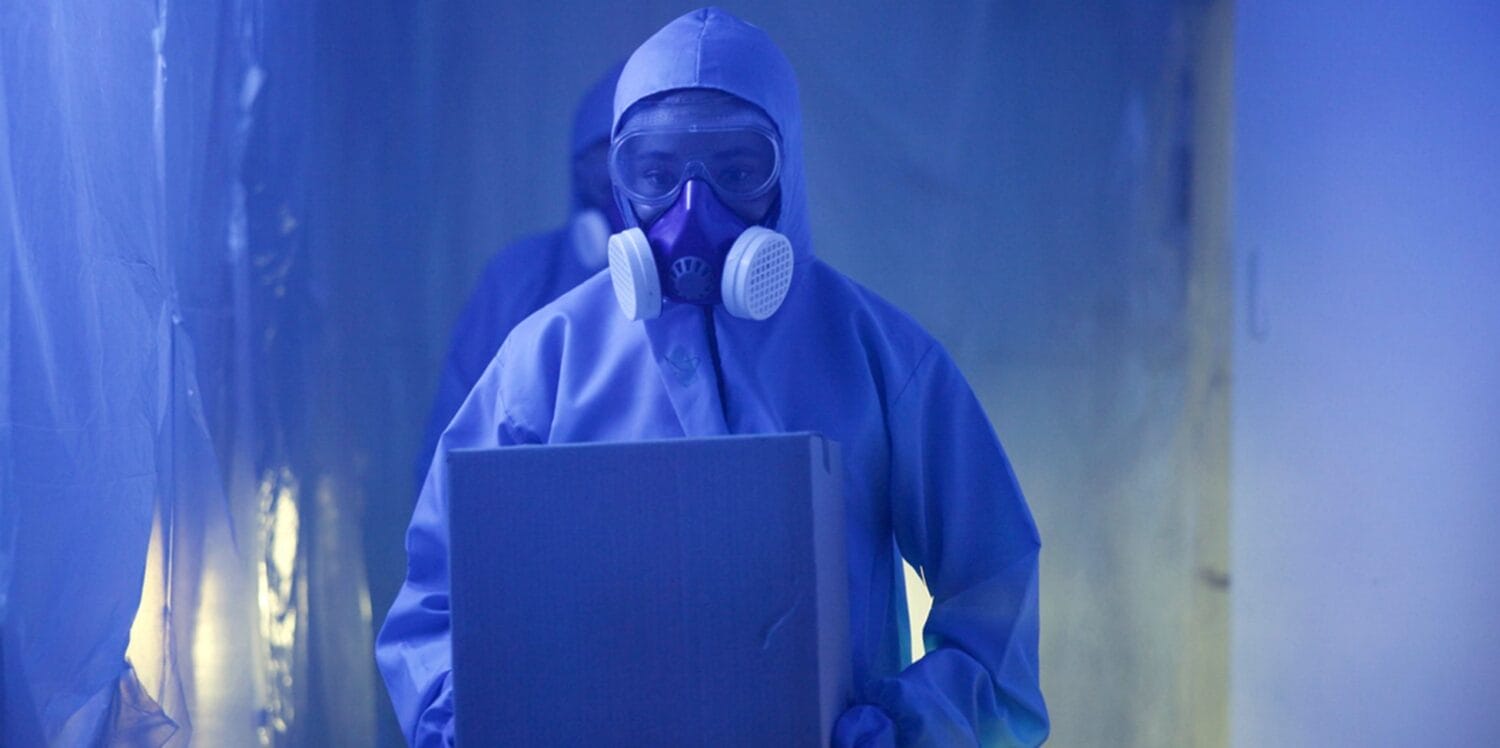
When fentanyl contamination occurs, the stakes are incredibly high. Professional cleanup services go beyond simple cleaning—they provide the specialized expertise, tools, and compliance necessary to protect law enforcement officers and the communities they serve.
Here’s why partnering with trained biohazard remediation professionals like Bio-One is essential:
Professional cleanup services utilize cutting-edge tools and methods explicitly designed to handle dangerous substances like fentanyl. This ensures comprehensive decontamination and minimizes risks for everyone involved. Key advantages include:
This thorough approach is critical in contaminated environments, such as squad cars, evidence rooms, and personal gear.
Fentanyl cleanup must adhere to strict regulatory standards to avoid legal or operational complications. Professional remediation ensures compliance with:
This focus on compliance safeguards officers and their departments from liability while maintaining public trust.
Fentanyl’s persistence on surfaces means inadequate cleanup can result in ongoing exposure, putting officers and others at risk long after the initial incident. Professional services eliminate these dangers by:
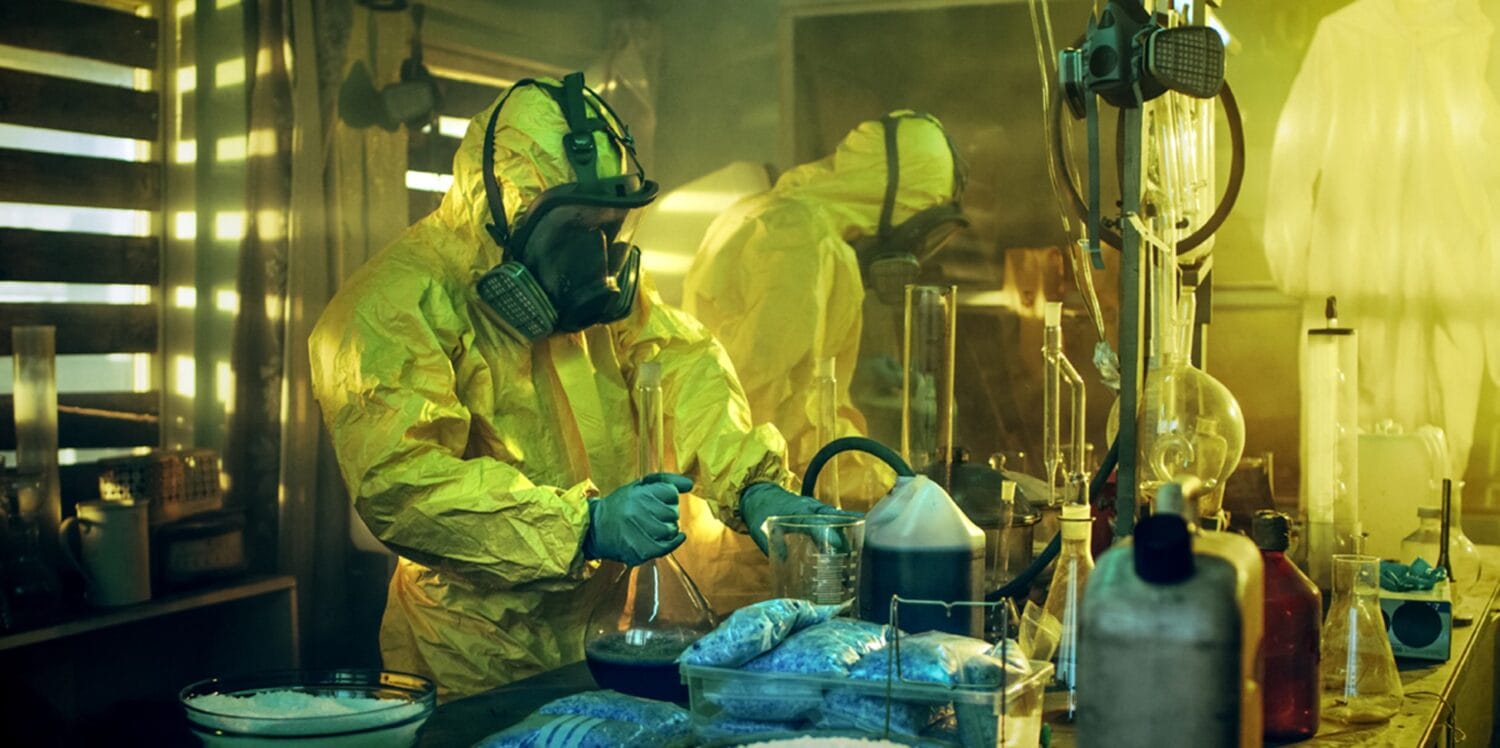
When fentanyl contamination threatens the safety of law enforcement personnel, swift, thorough, and professional action is essential. Bio-One brings unparalleled expertise to biohazard cleanup, addressing the unique challenges faced by officers on the front lines.
Here’s how Bio-One supports law enforcement with tailored solutions that prioritize safety, efficiency, and peace of mind:
Bio-One takes a meticulous approach to removing fentanyl contamination from every affected area, ensuring no trace is left behind. Our services include:
Time is of the essence when dealing with fentanyl contamination. Bio-One understands the urgency and provides:
Bio-One’s team consists of highly trained professionals with extensive experience in hazardous materials cleanup. Our qualifications include:
Beyond cleanup, Bio-One is a committed partner to law enforcement agencies, offering:
Regarding fentanyl contamination, Bio-One is more than a cleanup service—we’re a trusted partner dedicated to safeguarding the health and safety of law enforcement personnel. With our expertise, rapid response, and commitment to excellence, you can confidently face fentanyl challenges. Let us help you focus on your mission while we handle the hazards.
Fentanyl is a synthetic opioid up to 100 times stronger than morphine. Even microscopic amounts can cause severe respiratory distress, unconsciousness, or overdose if inhaled, ingested, or absorbed through the skin.
Officers can encounter fentanyl during arrests, evidence collection, or traffic stops. It can become airborne or transfer to their skin through contaminated objects, increasing the risk of accidental exposure.
Early symptoms include dizziness, confusion, and respiratory distress. In severe cases, exposure can lead to unconsciousness or life-threatening overdose.
Professional cleanup ensures that all fentanyl residues are neutralized using advanced tools, techniques, and protective measures, minimizing the risks of exposure and cross-contamination.
Squad cars, evidence rooms, and personal gear are often contaminated areas that require thorough decontamination to prevent secondary exposure.
Bio-One uses specialized equipment, cleaning agents, and certified protocols to safely remove fentanyl contamination from affected environments and ensure their safety.
Cleanup must comply with OSHA guidelines, environmental regulations, and agency-specific protocols to ensure safety, legality, and operational integrity.
Bio-One meticulously cleans every surface, crack, and crevice to eliminate all traces of fentanyl, preventing long-term exposure risks.
Yes, Bio-One offers 24/7 rapid response services to address fentanyl contamination promptly, minimizing downtime and exposure risks.
In addition to cleanup, Bio-One offers consultative support, training resources, and long-term partnerships to help agencies develop safe protocols and manage future fentanyl-related risks.

There is no timetable on grief, so it’s impossible to say how long it will take for your life to begin to feel normal again.
There may be times when it feels like nothing will ever be right again, but try to remind yourself that this feeling is not forever. You will recover, it just takes time.
It’s hard to be patient with recovery, especially as life keeps moving on around you and pressuring you to continue as normal, but you deserve the time to heal and adjust from this traumatic loss, so allow yourself the time and space to do so.
There are, however, some things you can do to aid in your recovery process and ensure you are on the best possible path toward healing:

It may feel as though there’s nothing a therapist could tell you that you don’t already know, but therapists do a lot more than just talk. A good therapist can:
Professional help won’t cure your grief, but it can help you feel like you have more control over where the grief is taking you.
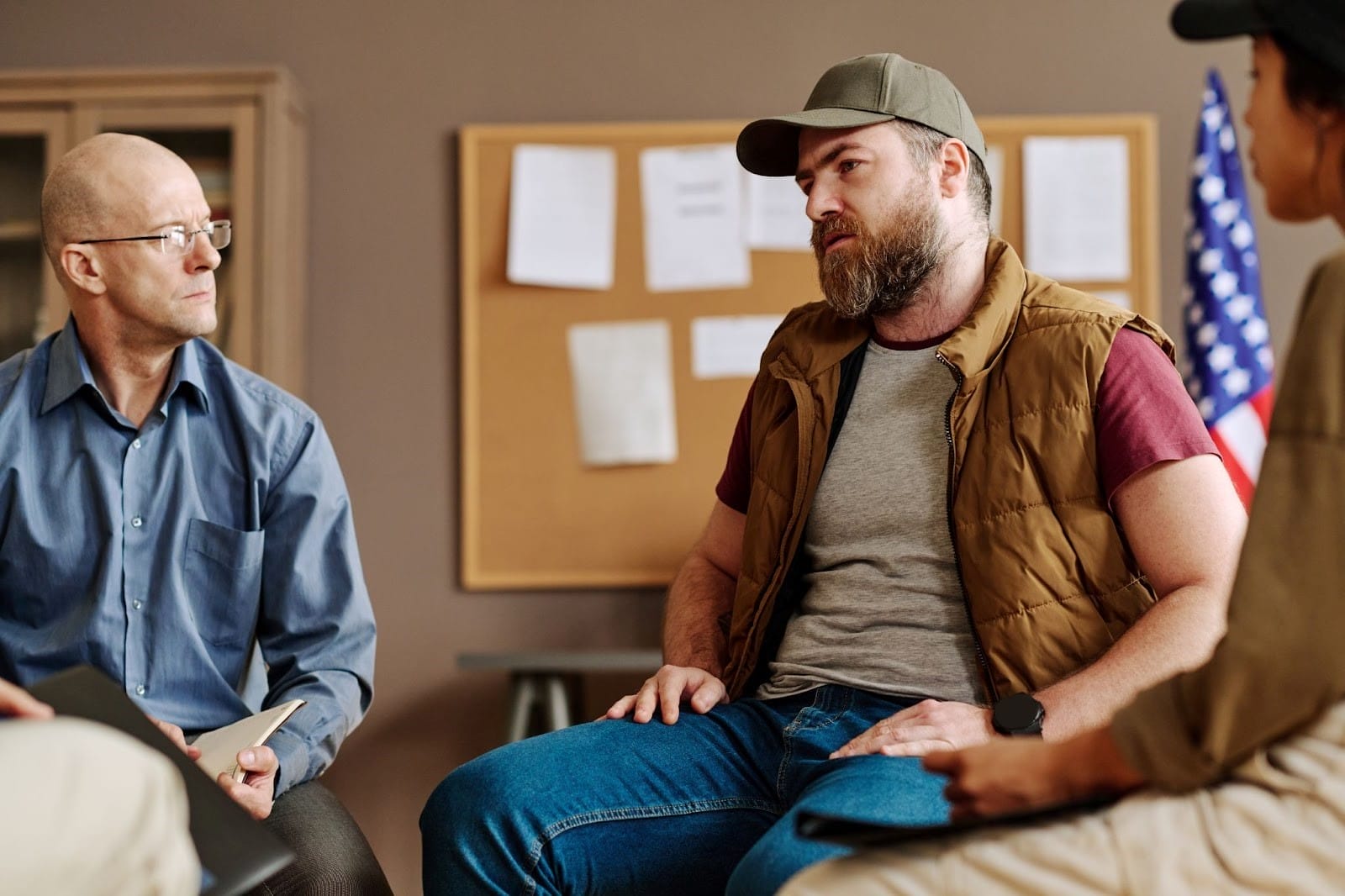
Because suicide is unfortunately so common, there are many survivors who are going through something very similar to you.
Finding a support group will help you to connect with them. Like therapy, this can give you a forum to work through complicated feelings—but more importantly it can help you feel less alone in what you’re going through.

Support groups are excellent, but it is also a good idea to form a tighter circle of support with those who are grieving the same person you are.
With this group you can share more specific feelings about the situation, as well as find positive ways to honor your loved one together.
Eventually you may find yourself laughing together over happy memories of the person, which is a huge and important step on the road to recovery.
Some people are able to find a greater sense of peace and understanding through personal faith practices.

Whether it’s organized religion or general spiritual practices, finding spiritual meaning in life and death can be hugely beneficial.
However, be aware that some religious belief systems condemn suicide as a sin.
Carefully consider whether these beliefs will aid in your recovery or if another faith would prove more forgiving and uplifting.

As time goes on, you may find that birthdays, anniversaries, and holidays are especially difficult. During these times, it can be helpful for you and other loved ones to find special ways to honor the person you lost.
These can be small acts, like sharing stories on holidays, or larger things, like celebrating their birthday. Mark the occasion with whatever feels right.
Beginning new traditions is a good way to keep your loved one close to you even as your lives begin to move forward without them.
Above all, community and connection are what will be most helpful in getting you through this time.

Resist the urge to disconnect from others. Do what you can to reach out. Be sure to accept the help of those who are reaching out to you.
There are a lot of other people going through the same tragedy as you, and you can support one another through this difficult journey.
There are also likely people who care about you that aren’t connected to the tragedy who you can lean on.
Even if you aren’t looking for someone to console you, sometimes finding distractions from the pain can be helpful in allowing yourself the space to heal.
In the wake of a suicide, there is often an increase in suicidal thoughts and impulses in loved ones as well. Often, these thoughts are a result of your brain trying to cope with the loss. It can become a genuine risk—particularly among families and friend groups with high rates of mental illness.
To kep everyone safe, have a close community of survivors and encourage everyone to be open with their feelings, especially about suicidal thoughts.
The more your community unites to support and protect each other, the better the chance of preventing this tragedy from happening again.

Your grief may have you feeling a little stuck in time right now—unable to move forward in any meaningful way. As time passes this will begin to ease and you will find yourself beginning to move on.
When the forward motion starts again, it is an instinct for some to try to hang onto their grief out of a sense of duty to the person they lost, or fear that letting go will mean forgetting.
The idea of truly moving on can be scary. If you’re struggling with the transition, volunteering your time to a cause dedicated to preventing suicide and supporting survivors like you can help to ease some of the guilt and fear.
Working to do some good in the name of your lost loved one serves as an excellent bridge to carrying on with your life while still keeping their memory with you.

There may still be bumpy roads ahead. Grief is complicated and can come in spurts and waves, but as you start feeling a little more whole give yourself permission to begin living again.
Little by little, life and joy will return to you, and though the ache may not ever fully go away, things will get better.
Suicide leaves deep wounds in families and communities. The scars will always be there. However, with time and support, you will be able to reclaim happiness for yourself and begin living again.